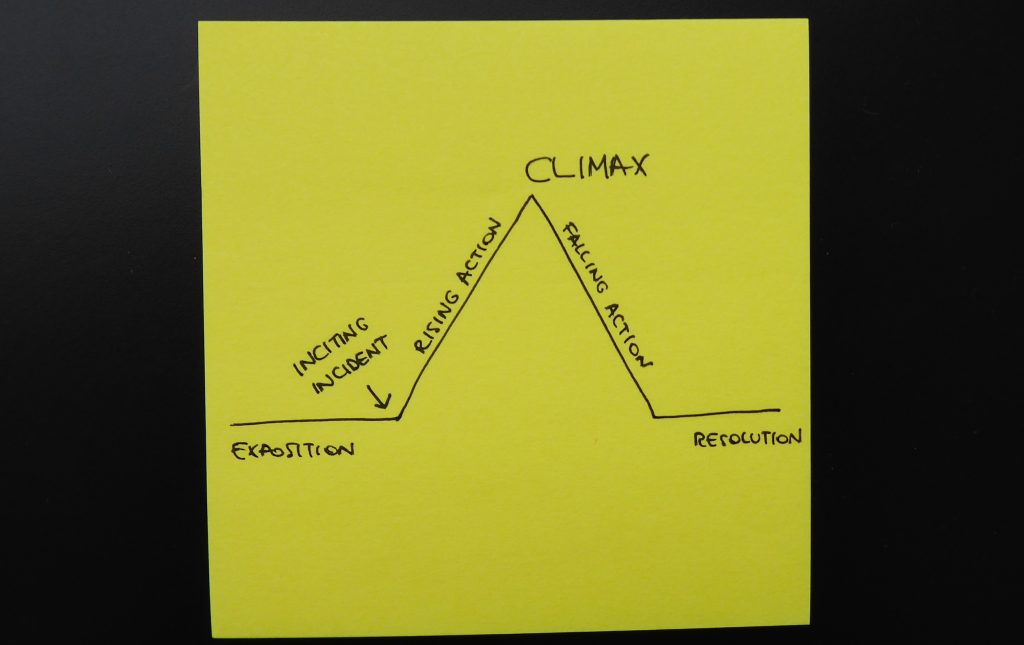
Welcome to contentfolks—a fortnightly newsletter with short lessons & ideas about content that makes a difference, sparks action, and truly serves its audience. Thank you for being here!
Hey 👋
When working on customer stories, your natural impulse as a marketer may be to present your product or service in the best possible light.
Pro tip: resist that impulse. The most effective customer stories are not the ones where everything is 100% perfect, 100% of the time.
A 5-part dramatic structure for your customer stories
To create a good customer story, it helps to take a step back from marketing and look at the basic principles of what makes any story good.
Think of your favourite books or movies with happy endings. Chances are they follow a 5-part dramatic structure similar to this one:
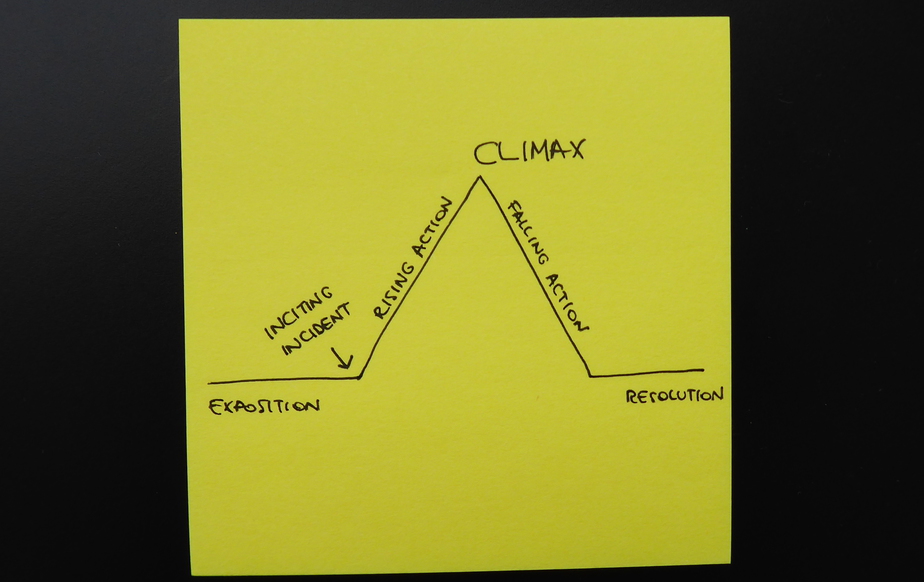
Exposition → the scene is set and the protagonist is introduced. An inciting incident throws their world off kilter and sets the story in motion
Rising action → the protagonist must respond to the inciting incident; they go on a journey to acquire the necessary knowledge and/or skills; they may be helped by a mentor figure
Climax → as the action accelerates, we reach the highest point of tension and the make-or-break moment for the protagonist
Falling action → the protagonist is newly empowered and the main conflict starts to resolve
Resolution → all loose ends are tied up and the protagonist finds themselves in a better position than when the story began
This archetypal structure has been with us for thousands of years, and you can spot it everywhere—from ancient Greek comedies to any episode of Star Trek: Voyager to the most bonkers movie I’ve seen this year, Barb and Star Go to Vista del Mar.
It’s time to use it for your customer stories, too.
💡 A practical example 💡
A few months back, I ran a batch of customer interviews and turned them into stories for an edtech startup I’m working with, Aula.
I asked every educator to:
- Recall their feelings when switching from their previous teaching platform to Aula
- Explain how their learning curve had gone and what their experience had been
- Share some of the positive results they’d seen
The educator who stood out the most admitted he was initially “petrified” and had “panicked” at the prospect of having to switch platforms. He also told me he was eventually “mind-blown” and “astounded” when he saw how much his students had enjoyed Aula.
I kept a neutral face throughout the interview, but internally I was doing a little happy dance: those are perfect emotions to plot onto our 5-step dramatic structure!
If you want to take a look at the finished write-up, it’s here → Dr Olomolaiye @ Aula. Let me break it down:
1. Exposition
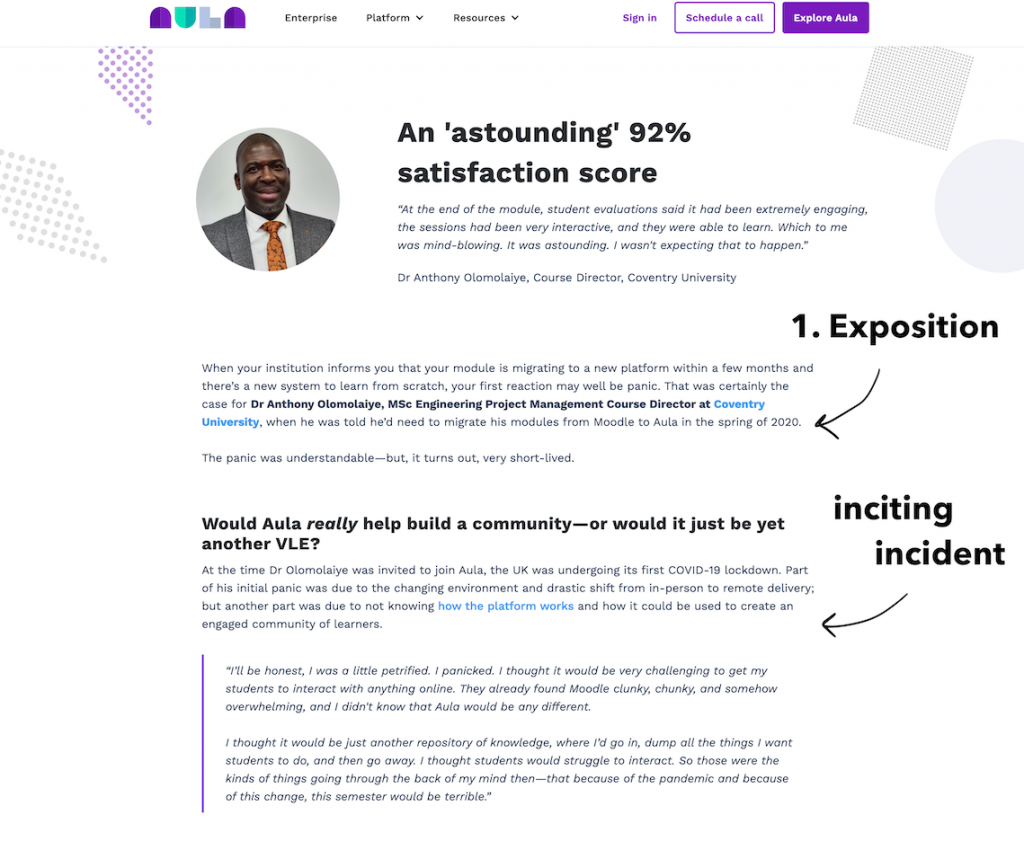
The story opens by setting the scene: it’s the spring of 2020, the UK is under a pandemic-induced lockdown, and all university teaching has shifted online.
Right in the middle of this disruption, our protagonist, Dr Anthony Olomolaiye, experiences his inciting incident: university leadership informs him that he will need to migrate to Aula’s teaching platform.
2. Rising action
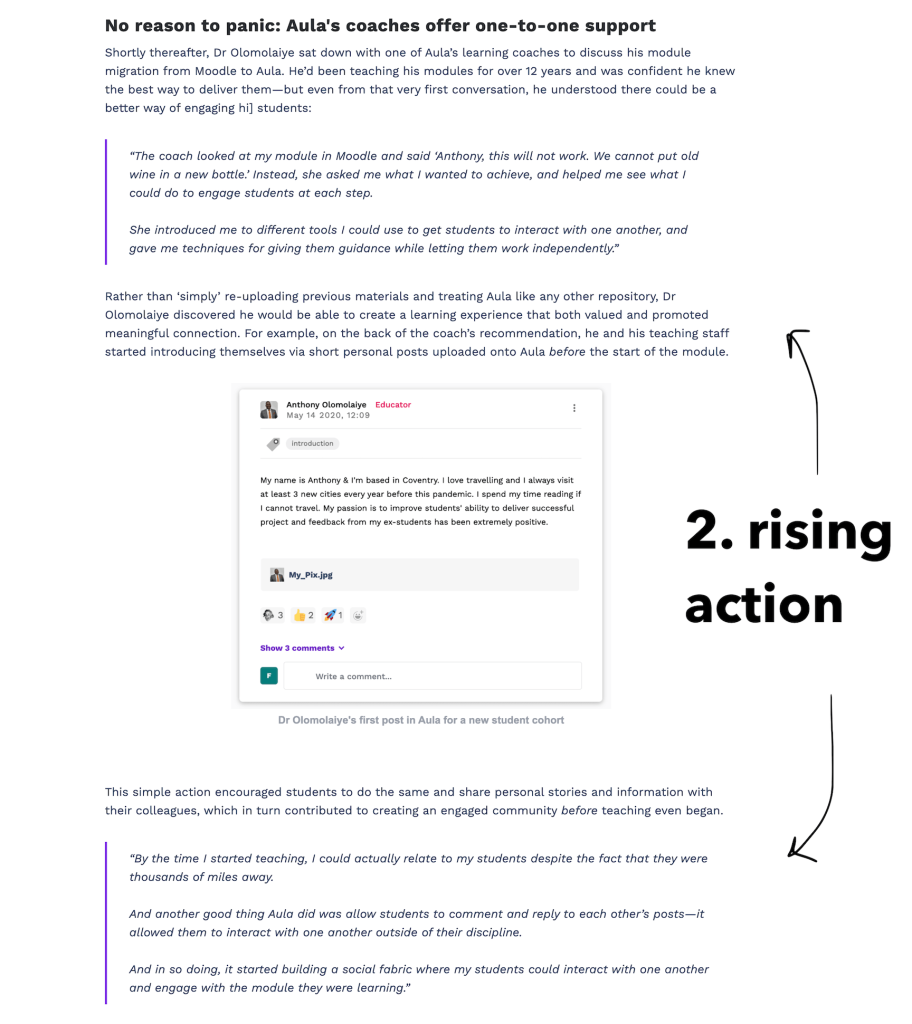
Now the protagonist must respond to the inciting incident. At first, he is not happy—and I print his reaction verbatim because it paints a vivid image other educators can identify with:
“I’ll be honest, I was a little petrified. I panicked. I thought it would be very challenging to get my students to interact with anything online. […] Those were the things going through the back of my mind: that because of the pandemic and because of this change, this semester would be terrible.”
The stakes are high: he has to unlearn his previous teaching system and master a new one—and he has to do it fast, to avoid the semester being terrible for both himself and his students. Luckily, he is aided in this journey by a mentor figure: an Aula consultant who shows him how to use the platform to his advantage.
3. Climax
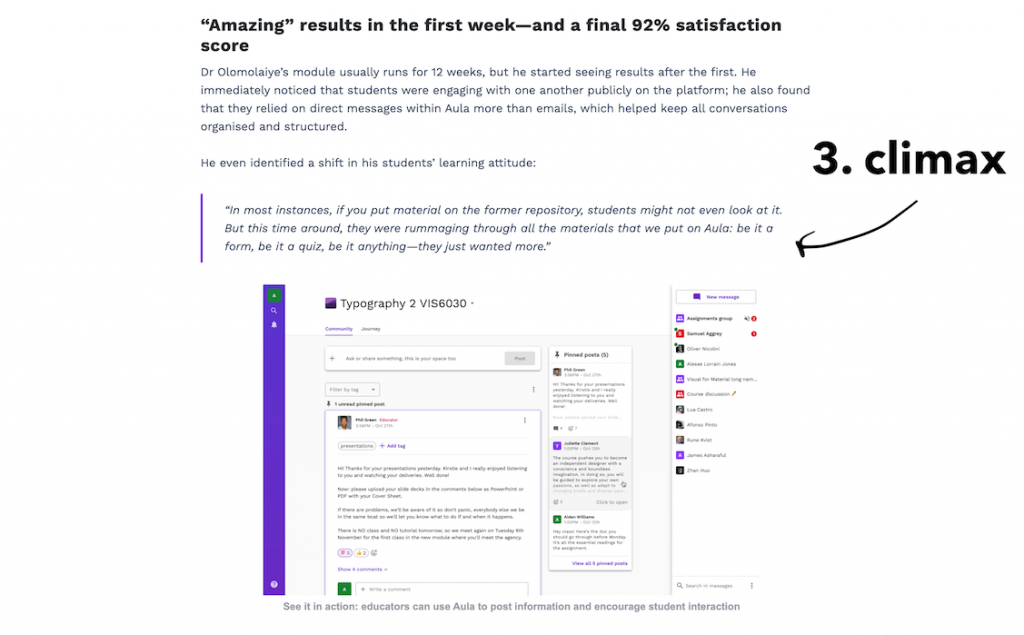
After a steep learning curve, the new semester begins and students are invited to join the platform. This is the moment of truth for the protagonist: will students like the new system, or were his effort in vain?
His words, again:
“In most instances, if you put material on the former [system], students might not even look at it. But this time around, they were rummaging through all the materials that we put on Aula: be it a form, be it a quiz, be it anything—they just wanted more.”
Turns out students love the new system—that’s why I’m writing a story about it, after all 😉 This climactic scene gives the protagonist confidence to move forward through the rest of the semester.
4. Falling action
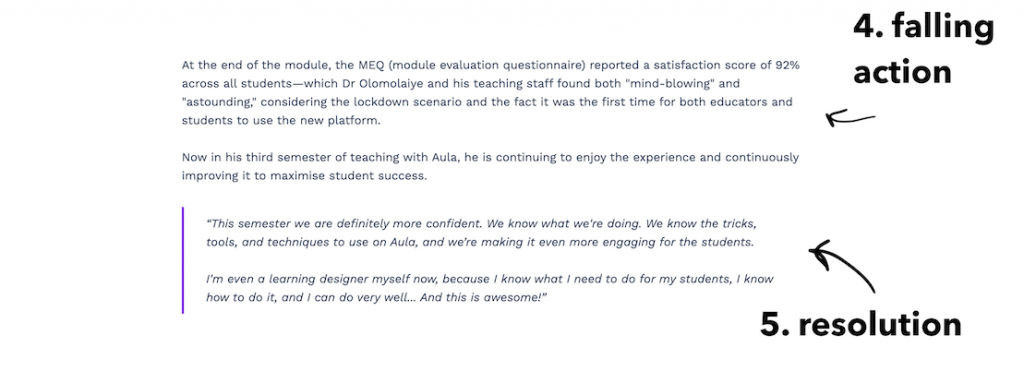
At the end of the module, students evaluate the course and give the protagonist a 92% satisfaction score. Again, I print his reaction verbatim because it stands in wonderful contrast to his initial panic:
“To me [it] was mind-blowing. It was astounding. I wasn’t expecting that to happen.”
5. Resolution
The story is resolved and the protagonist has been successful in his quest—so much so that he now feels he has the tools to go on more Aula adventures on his own. I add one final quote:
“This semester we are definitely more confident. We know what we’re doing. We know the tricks, tools, and techniques to use on Aula, and we’re making it even more engaging for the students […] I know what I need to do for my students, I know how to do it, and I can do very well… And this is awesome!”
And there you go. This story really has everything: an inciting incident, a panicked protagonist, a learning curve, a mentor figure, a climactic scene, a successful resolution, and even major character development 🔥
Customer stories don’t have to be perfect: they have to be real.
As customers, we already know it’s normal to have fears, objections, and/or concerns when choosing a product or service. Pretending otherwise in our marketing is both disingenuous and counter-productive: people get suspicious when presented with super-polished, raving stories that conveniently ignore the ‘messy’ parts of being a customer.
This 5-point dramatic structure brings some truth back into the story—and also makes for damn good storytelling.
Will you give it a try?
